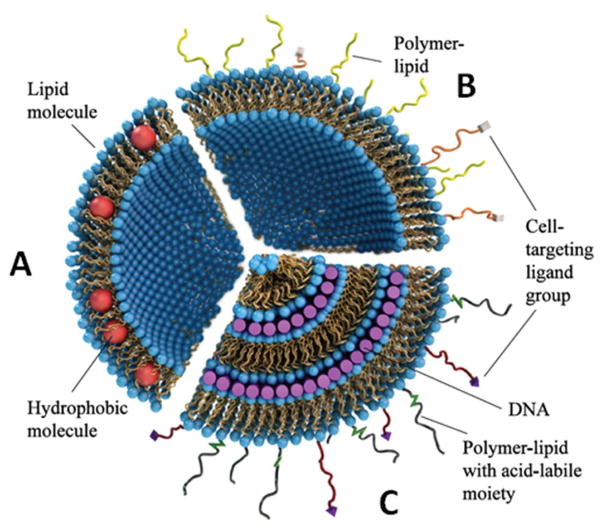Fig. 1.
Evolution of lipid-based drug carriers. (A) Initially liposomes, formed with lipid molecules (shown with blue headgroups and gold tails) were used to trap hydrophobic drugs (red spheres) within the bilayer and hydrophilic drugs in the aqueous interior. (B) Surface-functionalized liposomes typically contain polymer-lipids to inhibit protein binding to the surface. The distal end of the polymer can be chemically-modified with a targeting ligand for organ- and cell-specific targeting. (C) CLs mixed with DNA form condensed CL–DNA complexes with well ordered structure. Polymer lipids can be synthesized with an acid-labile moiety to promote shedding of the polymer at low pH. Reproduced from (19) by permission of The Royal Society of Chemistry (RSC) on behalf of the Centre National de la Recherche Scientifique (CNRS) and the RSC.

